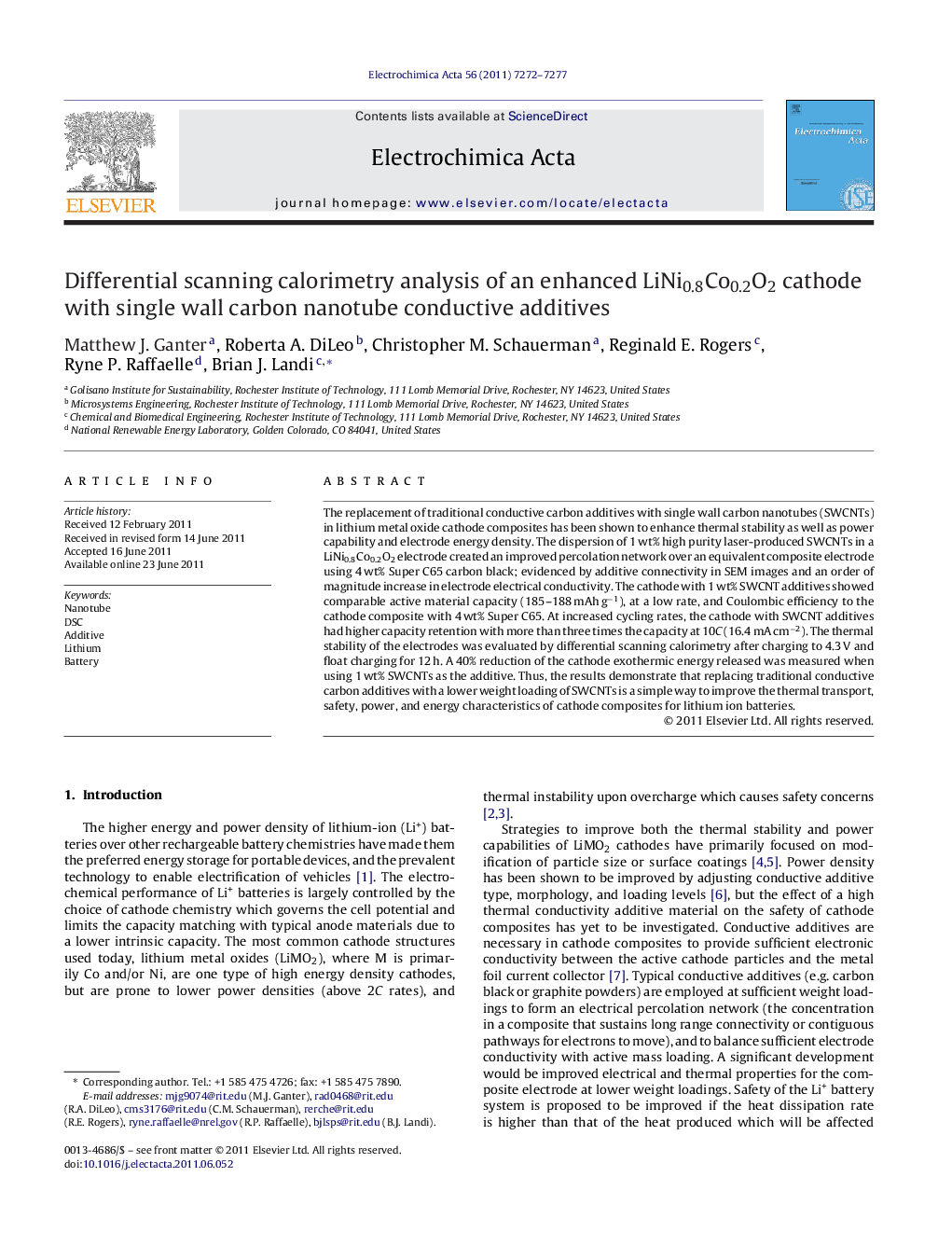| Article ID | Journal | Published Year | Pages | File Type |
|---|---|---|---|---|
| 189277 | Electrochimica Acta | 2011 | 6 Pages |
The replacement of traditional conductive carbon additives with single wall carbon nanotubes (SWCNTs) in lithium metal oxide cathode composites has been shown to enhance thermal stability as well as power capability and electrode energy density. The dispersion of 1 wt% high purity laser-produced SWCNTs in a LiNi0.8Co0.2O2 electrode created an improved percolation network over an equivalent composite electrode using 4 wt% Super C65 carbon black; evidenced by additive connectivity in SEM images and an order of magnitude increase in electrode electrical conductivity. The cathode with 1 wt% SWCNT additives showed comparable active material capacity (185–188 mAh g−1), at a low rate, and Coulombic efficiency to the cathode composite with 4 wt% Super C65. At increased cycling rates, the cathode with SWCNT additives had higher capacity retention with more than three times the capacity at 10C (16.4 mA cm−2). The thermal stability of the electrodes was evaluated by differential scanning calorimetry after charging to 4.3 V and float charging for 12 h. A 40% reduction of the cathode exothermic energy released was measured when using 1 wt% SWCNTs as the additive. Thus, the results demonstrate that replacing traditional conductive carbon additives with a lower weight loading of SWCNTs is a simple way to improve the thermal transport, safety, power, and energy characteristics of cathode composites for lithium ion batteries.
• Replaced 4 wt% carbon black conductive additives with 1 wt% single wall carbon nanotubes (SWCNTs) in cathode composite. • Use of SWCNT additive increased conductivity of cathode composite by over an order of magnitude. • SWCNT additive composite had triple the capacity at a 10C rate. • SWCNT additive composite reduced exothermic energy released upon delithiation by 40%.
